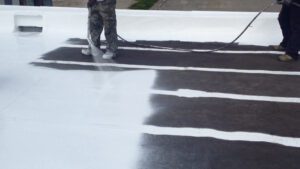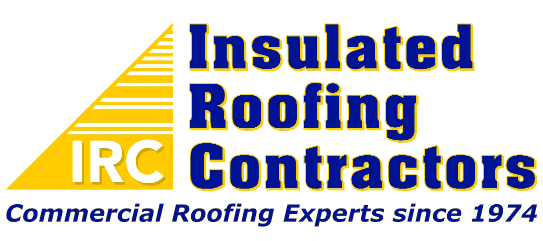WHAT IS THE BEST FLAT ROOF SYSTEM FOR YOUR BUILDING?
We’ve covered before on this blog several times the fact that no flat roof system is perfect in every situation. Every building is different and therefore there are differences between every roof. There will be something unique to every roof that make it difference from others. These differences are why there is no single best flat roof system in every situation – there will always be advantages and disadvantages to each flat roof system that need to be evaluated for your building.
Let’s take a look at some of the flat roof systems available and some of their strengths and weaknesses.
Best Flat Roof Systems
Metal
Metal is one of the most commonly found flat roof materials on existing buildings, though on new construction and new repairs it is not nearly as common. What was the most common roofing material less than 20 years ago has been dethroned by a roof type down further on this list. Metal roof advantages include consistency in manufacturing style, performance, and installation, as well as a long lifespan.
Detractors of the metal roof system cite it’s propensity to rust, common leaks, fastener blackout, and gaps that develop due to the metal shifting.
All in all, metal roofs are a pretty good system with a proven track record that may work for your building.
Spray Foam Roofing
Spray foam roofing is the system that we specialize in, and we truly believe it to be the best flat roof system available. Spray foam roofs are extremely versatile and can be installed in a number of situations with a number of different roofing obstacles that have to be overcome. Barrel roofs, roofs with multiple penetrations, roofs that cannot be torn out, are all examples of situations where spray foam thrives thanks to it’s versatility.
Some of the downsides of foam include higher-priced material costs (though these costs are usually recouped in lower installation and lifecycle costs), risk of overspray damaging nearby windows and cars at installation, and the expertise required to be a good installer. While it does require expertise to install the material, once an installer has trained and practiced with the material, they can generally install it very quickly and easily.
Spray foam is a great roofing system for any building that has unique obstacles that have to be overcome thanks to its versatility, and is also a great fit for building owners looking to save money with low lifecycle cost of the material, as well as through the energy savings the material provides.
Single-Ply Roofs
Single-ply roofs have recently overtaken metal roofs as the most commonly installed flat roof system. Single-ply roofs include multiple different systems: TPO, PVC, EPDM, and others.
Advantages of single-ply are it’s quick and relatively foolproof installation, a low price tag compared to other roofing materials, a long life, and a wide array of suppliers to choose from.
The downsides of single-ply roofs include: the presence of seams which are more prone to failure and leaking, the presence of fasteners which are dangerous for the same reasons as seams.

Roof Coatings
Roof coatings are one of the newest contenders in the roofing market. They are considered by some to be less proven than other roofing systems, but all signs based on existing roof coating case studies point to a long-lasting and effective roofing system.
One of the biggest advantages of roof coatings is the elimination of the need for roof tear off. Roof coatings are designed to be applied directly to the existing roofing system, without tearing off any part of the roof. This reduces landfill waste, job labor, and therefore expenses associated with the job. Roof coatings also tend to have a very long life and are renewable at the end of that life which saves on lifecycle costs.
Some of the weaknesses of roof coatings are the fact that they can easily be installed incorrectly if a contractor does not know what they are doing, and if a manufacturer does not properly inspect the roof. Some roof coatings such as acrylics, also have limitations when it comes to ponding water. This weakness is a case-by-case weakness, as some systems such as a silicone roof coating can resist ponding water.
Conclusion
As you can see above, there are many different roofing systems that have been popular over the last 50 years and have also emerged as new contenders in the market. Every roofing system has different strengths and weaknesses that should be evaluated for your particular situation. If you would like more information on any of these roofing systems or how to choose the best roofing system for your building please don’t hesitate to call us.
